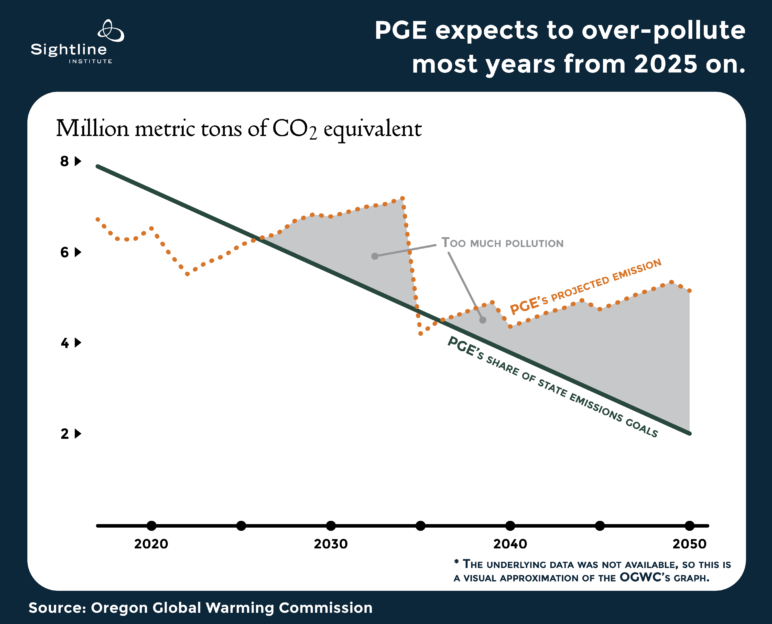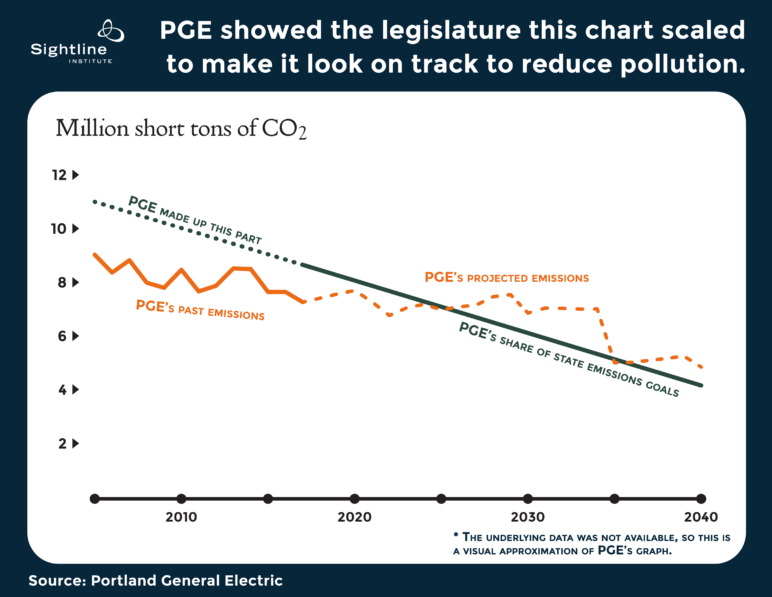After long years of negotiation, Oregon could be ready to make polluters pay and invest the revenue in the state. But as the legislature convenes for a whirlwind one-month session, a surprising opponent is appearing on stage: Portland General Electric (PGE). PGE, the electric utility serving customers from Portland to Salem, likes to tell people it favors clean energy, but when faced with real climate policy opportunities the company looks more like a back-stabber.
In at least five ways, PGE’s opposition to Oregon’s Clean Energy Jobs Bill looks like a tragic betrayal:
1. Betraying its image
PGE advertises its commitment to clean energy and climate action. It recently joined governors, mayors, and businesses across the country to declare their shared commitment to ensure the United States remains a global leader in reducing carbon pollution. PGE applauded Multnomah County and the City of Portland’s goals to move to 100 percent renewable energy by 2050 and said it will help the region lead the way to a clean energy economy. But now…
2. Betraying its customers’ values
PGE says that it reflects its customers’ values, and recognizes that its customers want renewable energy. Oregonians overwhelmingly know climate change is happening and want to regulate greenhouse gas pollution. Oregonians overall, and this is more true for PGE’s customers, support a cap-and-trade program like the Oregon Clean Energy Jobs Act by a three-to-one ratio. So why is PGE opposing it?
3. Betraying its fellow utilities
Pacific Gas and Electric (PG&E) to the south and Puget Sound Energy (PSE) to the north vocally support state climate action. (PSE has its own problems, but at least it supports state climate action.) Like PGE, PG&E and PSE are West Coast utilities with little coal power. Yet, PGE is breaking ranks to stand instead with coal-powered, Berkshire Hathaway-owned PacifiCorp in opposition to Oregon climate action.
4. Betraying its own future
By fighting a bill that will help Oregon stop subsidizing dirty fuel vehicles and move instead to electric vehicles (EVs), PGE is missing a giant opportunity. Electricity-hungry vehicles will create new demand for electricity. And EVs could create a virtuous clean energy cycle by charging up when solar and wind power are abundant, then selling back to the grid when sun and wind are scarce, helping utilities integrate more renewable energy into the grid. Utilities, especially utilities serving a progressive urban market like Portland, whose residents are likely to be early adopters of EVs, would do well to embrace and plan for electric vehicles to make the most of the coming change.
5. Hiding in the shadows
PGE says it is truly, in its heart of hearts, committed to clean energy and climate action, and asks regulators and legislators to trust its good intentions. For example, PGE says it plans to “achieve our proportionate share of Oregon’s 2050 greenhouse gas reduction goal.” But it’s got it’s fingers crossed behind its back.
The green line in the chart below shows the Oregon Global Warming Commissions’ estimate of PGE’s proportionate share of Oregon’s goal of cutting pollution 75 percent below 1990 levels by 2050. The orange line shows what PGE actually plans to do. The gray areas show how much PGE plans to over-pollute, in nearly every year between 2025 and 2050, and getting worse as time goes on. This chart makes clear that PGE is not on track to do its share.

Right now in Salem, PGE lobbyists are not showing legislators the chart above. They are using a misleading chart designed to obscure the fact that the utility is not on track to cut pollution as much as the state needs to. Instead of showing 2017 through 2050 as the chart above shows, PGE lobbyists’ chart shows 2005 through 2040. (See the last page of this presentation). By shifting the frame, PGE’s chart minimizes its over-pollution from 2025 through 2034 and hides its over-pollution post 2040 entirely. State law didn’t require emissions reductions until 2010, so PGE appears to have fabricated the “goals” line from 2005 through present to create the illusion that it has been exceeding goals state goals.

In 2016, the Oregon legislature required Oregon utilities to kick their coal habit. The law obligates PGE to achieve the emissions reductions in the graph above by 2035. But PGE left out the rest of the story through 2050. The utility is currently legally allowed to let pollution rise and intends to do just that. Without a legal limit on pollution (which the Oregon Clean Energy Jobs Bill would provide), PGE’s emissions will rise to unacceptably high levels, making it all but impossible for Oregon to meet its pollution reduction goals.
Put down the knife
It’s not too late for PGE to live up to its stated values and support of climate action. It’s not too late for PGE to embrace the clean energy future its customers want. It’s not too late for PGE to become a leader on encouraging electric vehicles in Portland and Salem to help the utility get rid of its dirty power and get clean.


Comments are closed.